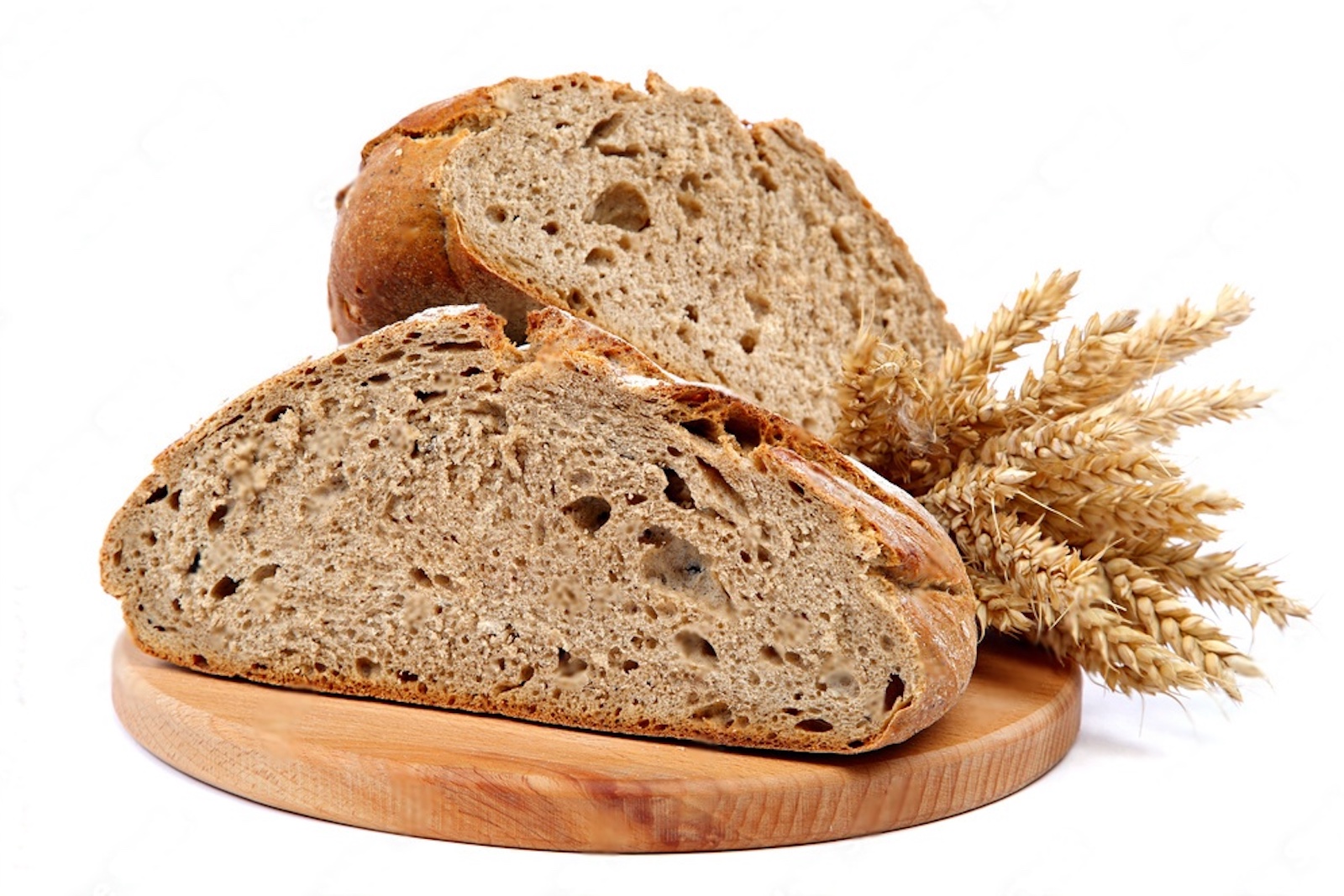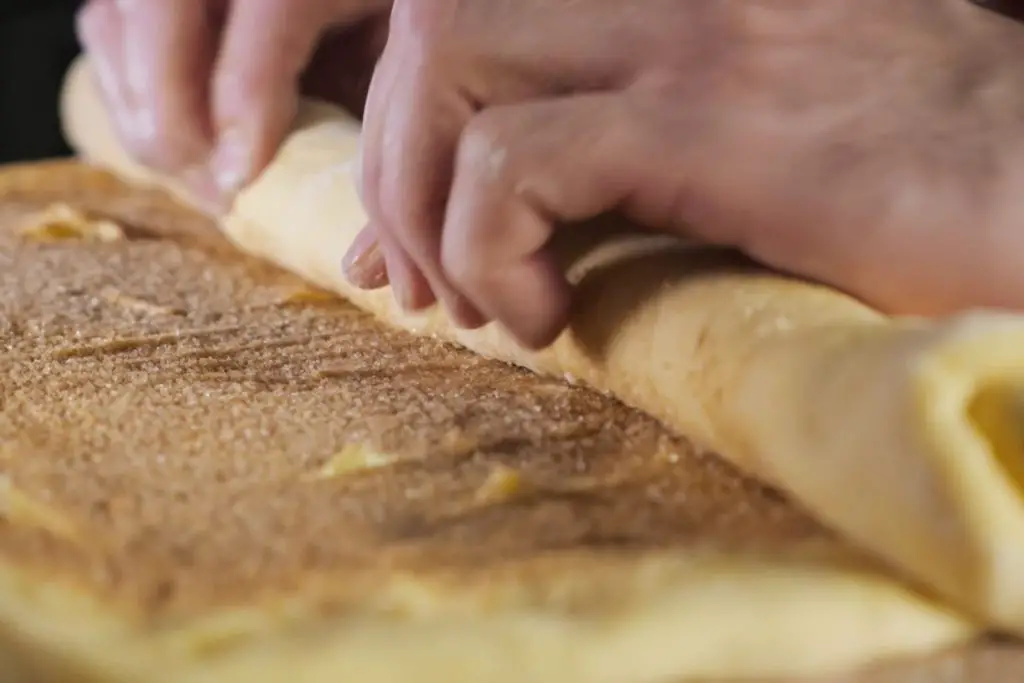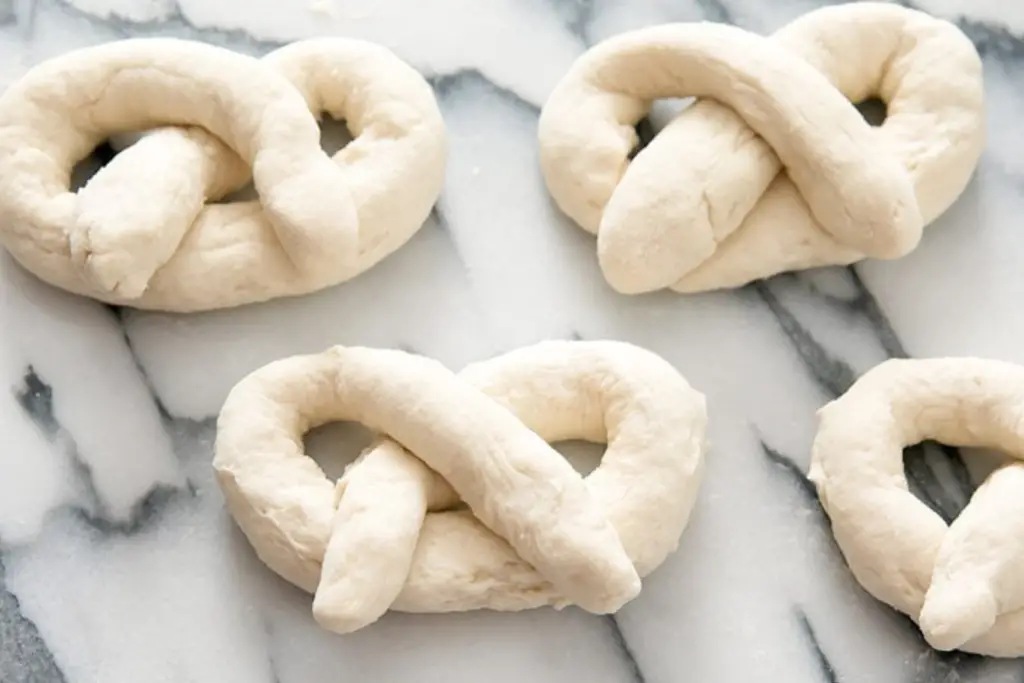
Rye bread is a flavorful and hearty type of bread that is popular for its distinctive taste and texture. It can come in various forms, from traditional loaves to artisanal rolls, and it’s often chosen for its nutritional benefits and unique flavor profile. Whether you’ve baked a batch of rye bread at home or bought it fresh from a bakery, there might be times when you have more than you can consume right away. Freezing rye bread can help you preserve its quality and enjoy it over an extended period. This article will guide you through the steps to freeze rye bread while ensuring it remains delicious when you’re ready to enjoy it.
Discover the steps to freeze rye bread:
Step 1: Choose the right rye bread
When it comes to freezing rye bread, the first step is to select the appropriate loaf. While rye bread is renowned for its robust flavor and dense texture, the freshness of the bread plays a crucial role in how well it will fare in the freezer. One of the key considerations here is the composition of the bread itself.
Rye bread often comes in various varieties, and some might be enhanced with seeds, nuts, or whole grains, adding both flavor and nutritional value. However, these additional ingredients can also introduce natural oils to the bread. These oils, while beneficial for taste and nutrition, can contribute to a slightly shorter shelf life compared to plain white bread.
To ensure that your rye bread maintains its quality throughout the freezing process, it’s recommended to freeze it when it’s still relatively fresh. Aim to freeze the rye bread during its prime, just before it starts to lose its initial softness and flavor. This will help preserve its taste and texture during its time in the freezer.
Choosing rye bread that hasn’t crossed into staleness territory is especially important if you’re dealing with a loaf that includes seeds or whole grains. These additions, although delightful for your taste buds, can increase the chances of the bread becoming stale more quickly due to the oils they contain. By opting to freeze the bread at its freshest, you’re giving yourself the best chance to enjoy that delightful rye experience once it’s been thawed.
Ultimately, the choice of rye bread matters greatly in ensuring the success of the freezing process. Select a loaf that’s still in its prime, and if it’s enriched with seeds, nuts, or whole grains, remember that freezing it while it’s fresh will help you savor its flavors and textures as if it were just baked.
Step 2: Slice the bread (optional)
As you prepare to freeze your rye bread, you have the option to take an extra step that can greatly enhance convenience: slicing the bread before placing it in the freezer.
Slicing the rye bread before freezing is a practical choice that offers several advantages. One of the main benefits is the ease of portion control. By slicing the loaf into individual portions before freezing, you eliminate the need to defrost the entire loaf each time you want a slice. This can be particularly handy when you’re in a hurry or simply craving a quick snack. Whether you’re planning to make a sandwich, toast, or use the bread in various recipes, pre-sliced portions can save you time and effort.
Moreover, slicing the rye bread before freezing can also help prevent unnecessary waste. Imagine having to defrost the entire loaf just to use a couple of slices, only for the rest to potentially go stale before you can enjoy them. By pre-slicing the bread, you can defrost and use only what you need, reducing the likelihood of food waste.
If you’re concerned about the slices sticking together during freezing, a simple trick can help. Before freezing, lay the individual slices on a baking sheet and place them in the freezer for a short period until they are slightly firm. This process, often referred to as “flash freezing,” prevents the slices from sticking together when placed in the storage container, making it easier to remove just the desired number of slices later on.
Step 3: Wrap or bag the rye bread
As you embark on the journey of freezing your rye bread, the way you package it plays a pivotal role in preserving its flavor and texture during its time in the freezer. Proper packaging is a safeguard against a common foe: freezer burn.
Freezer burn occurs when frozen food is exposed to air, leading to the dehydration of the food’s surface. This can result in changes to the texture, taste, and overall quality of the food. To ensure your rye bread remains as delectable as the day it was baked, it’s imperative to protect it from freezer burn through proper packaging.
There are a few options available for packaging your rye bread, each with its own merits. Plastic wrap, aluminum foil, and resealable plastic bags are among the most commonly used choices. Whichever method you opt for, the key is to create an effective barrier against air.
When using plastic wrap, ensure that you wrap the rye bread tightly. The wrap should cling to the surface of the bread, leaving minimal air space. This tight seal prevents air from reaching the bread, maintaining its moisture content and preventing freezer burn.
Aluminum foil is another viable option. Wrap the rye bread in a layer of aluminum foil, making sure it’s securely enclosed. The foil provides an added layer of protection against air exposure.
Resealable plastic bags are also a popular choice. Place the bread inside the bag and press out as much air as possible before sealing it. Double-bagging is an extra precaution you can take, which involves placing the wrapped bread inside a resealable bag for added insulation.
Preventing freezer burn not only preserves the taste and texture of the rye bread but also contributes to its overall quality. The last thing you want is to eagerly retrieve your frozen rye bread only to find it has lost its delightful appeal due to improper packaging.
Step 4: Double up for protection (optional)
When it comes to safeguarding your frozen rye bread from the clutches of freezer burn, an extra layer of defense can go a long way. This is where the optional step of double packaging comes into play—a strategy that involves placing your wrapped rye bread into a resealable plastic bag. Not only does this offer additional insulation against the scourge of freezer burn, but it also ensures that your precious loaf remains at its peak quality.
The primary purpose of this double packaging approach is to create a multi-layer barrier against air infiltration. Freezer burn occurs when the moisture within the food evaporates and then crystallizes on its surface due to exposure to the cold, dry air in the freezer. By enclosing the wrapped rye bread in a resealable plastic bag, you’re adding an extra layer of protection that acts as a barrier to prevent air from reaching the bread.
Here’s how you can execute this technique effectively:
- Wrap the Rye Bread: Begin by wrapping your rye bread securely in plastic wrap or aluminum foil, ensuring that the wrap adheres closely to the bread’s surface. This initial layer is your first line of defense against freezer burn.
- Place in Resealable Bag: After wrapping the bread, gently place it inside a clean resealable plastic bag. The bag should be appropriately sized to accommodate the wrapped bread without excessive squeezing.
- Remove Excess Air: Before sealing the plastic bag, take a moment to squeeze out as much excess air as possible. Air pockets within the bag can create conditions conducive to freezer burn, so minimizing air is key.
- Seal Tightly: Seal the resealable bag securely, ensuring no air can sneak back in. A well-sealed bag not only prevents freezer burn but also maintains the bread’s moisture content.
The double packaging technique acts as a potent barrier, significantly reducing the chances of freezer burn affecting your rye bread. The wrap or foil serves as the first layer of defense, while the resealable plastic bag provides the second layer, further minimizing air exposure.
Although this step is optional, it’s particularly beneficial for those who plan to store their rye bread for an extended period or want to maximize the quality of their frozen bread. When you eventually retrieve your rye bread from the freezer, you’ll be greeted with slices that retain their original texture, flavor, and appeal—all thanks to the careful consideration you put into its packaging.
Step 5: Label the package
While freezing rye bread offers a fantastic way to extend its shelf life, it can sometimes lead to a freezer filled with mystery packages. It’s not uncommon to forget what’s inside a wrapped loaf or when it was frozen. To counter this potential confusion, the straightforward yet highly effective step of labeling your frozen rye bread packages becomes an essential practice.
Labeling serves as your own personal time capsule, allowing you to peer into the past and make informed decisions about which package to thaw first. It’s a simple act that involves jotting down two key pieces of information: the type of bread and the date it was frozen.
- Type of Bread: Rye bread, with its distinct flavor and character, can be a star in your freezer. However, when multiple types of bread find their way into the icy confines, distinguishing between them can be a challenge, especially once they’re wrapped and frozen. Labeling the package with the type of bread helps you immediately identify what’s inside, saving you from the guessing game later on.
- Freezing Date: Equally important as noting the type of bread is marking the freezing date. Time flies, and frozen bread doesn’t come with a built-in timestamp. By labeling the package with the date you froze the rye bread, you create a timeline. This allows you to prioritize your consumption based on the “first in, first out” principle. You’ll know which packages have been in the freezer the longest and can adjust your consumption plan accordingly.
- Imagine this scenario: you reach into the freezer, eyeing a package of rye bread. Without a label, you’re left wondering when it went in and what type of rye bread it is—seeded, plain, or perhaps a specialty flavor. This uncertainty could lead to missed opportunities or wastage. However, with a clear label stating “Seeded Rye Bread – Frozen on [Date],” you’re empowered to make a conscious choice.
Labeling your packages also adds a personal touch to your frozen bread storage. It showcases your thoughtful approach to organization and readiness. Plus, it sets the stage for a more efficient and enjoyable experience when you decide to thaw and enjoy your rye bread.
Step 6: Freeze the rye bread
As you prepare to preserve the goodness of your rye bread through freezing, the actual freezing process is where the magic happens. This step involves placing your carefully packaged rye bread into the freezer, where it will patiently await your future cravings. However, a few considerations during this step can significantly impact the quality of your frozen bread.
Packaging: Before you embark on freezing your rye bread, ensure that you’ve diligently wrapped or bagged it as outlined in previous steps. This protective layer safeguards the bread from the cold, dry air in the freezer, preserving its texture and flavor.
- Proper Placement: When placing the wrapped or bagged rye bread in the freezer, it’s essential to strategize its arrangement. If you’re freezing multiple slices or even whole loaves, a little spacing goes a long way. Adequate spacing between the packages ensures proper air circulation within the freezer. This circulation helps maintain a consistent temperature and prevents hotspots, which can lead to uneven freezing or potential freezer burn.
- Benefits of Air Circulation: Proper air circulation within the freezer is akin to creating an optimal environment for your frozen treasures. It aids in freezing the rye bread evenly, ensuring that every slice maintains its quality. Moreover, by preventing items from being packed too closely together, you make it easier to access and retrieve individual packages without disturbing others.
- Thawing Consideration: The spacing between your frozen rye bread packages also factors into the thawing process. Ample air circulation enables a more uniform thawing when you’re ready to enjoy the bread. This prevents certain parts from thawing faster than others, which could lead to uneven textures or premature spoilage.
- Efficiency in Organization: Lastly, strategic spacing between packages makes for an organized freezer. You’ll be able to easily locate and retrieve the specific package you’re looking for, minimizing the chances of digging through a pile of frozen items to find the one you need.
How Long Can I Keep Rye Bread in the Freezer?
When properly frozen and stored, rye bread can maintain its quality for up to 3 months. Beyond this period, while it might still be safe to eat, there could be a gradual decline in taste and texture. To enjoy the best quality, consider consuming your frozen rye bread within the 3-month timeframe.
Step 7: Thaw the rye bread
The moment you’ve been waiting for has arrived—savoring the delightful taste of your frozen rye bread. As you embark on this step, it’s crucial to thaw the bread with care, ensuring that its flavor, texture, and quality remain intact. Here’s how to do it:
Individual Slices:
- If you’re craving a single slice of rye bread, there are two preferred methods to thaw it:
- Room Temperature: Remove the desired number of slices from the freezer and place them on a plate or a clean surface at room temperature. Let them thaw naturally. This method allows the slices to gradually regain their softness without compromising their taste and texture.
- Toasting: For a quicker option, you can toast the frozen slice directly from the freezer. Pop it into a toaster or toaster oven until it’s golden brown and crispy. Toasting not only thaws the slice but also imparts a delightful crunch to the crust.
Whole Loaf:
Thawing a whole loaf requires a slightly different approach:
- Room Temperature: For an entire loaf, place it on a countertop at room temperature. Cover it loosely with a clean cloth to protect it from dust. Allow the loaf to thaw slowly. This method can take a few hours, but it ensures even thawing throughout the loaf.
- Oven Warming: Alternatively, you can gently warm the whole loaf in the oven. Preheat the oven to a low temperature (around 300°F or 150°C), then place the loaf directly on the oven rack or on a baking sheet. Warm it for about 15-20 minutes, checking periodically to prevent over-drying. This method is particularly handy if you’re planning to serve the loaf warm.
Note: Avoid thawing the rye bread in the microwave, as it can lead to uneven thawing and potentially compromise the bread’s texture.
Thawing rye bread with care is a crucial step in preserving its taste and texture. Gradual thawing at room temperature allows the bread to rehydrate naturally, restoring its softness. On the other hand, toasting from frozen brings back the crunchiness to the crust while keeping the inside moist. Thawing a whole loaf uniformly prevents uneven textures or potential sogginess.
Other related questions
Can I refreeze rye bread?
Yes, you can refreeze rye bread, but it’s best to avoid multiple cycles. Each thawing and refreezing can impact texture and taste. Ideally, thaw only the needed amount and consume promptly for optimal quality.
How do I know if the rye bread has gone bad after being frozen?
Inspect for changes in color, texture, or mold growth. Slight staleness is normal. If off-smells, significant dryness, excessive freezer burn, or unusual colors like green or pink appear, discard. Trust your senses and discard if unsure.
Can I Freeze Homemade Rye Bread?
Certainly! Freezing homemade rye bread is a great way to extend its shelf life. Just ensure the bread is completely cooled before wrapping it securely and following the steps outlined in the freezing guide. Proper packaging and freezing will help preserve the flavor and texture of your homemade rye bread for future enjoyment.
Can I Freeze Specialty Rye Breads, Like Seeded or Whole Grain?
Specialty rye breads with seeds or whole grains can also be frozen following the same guidelines. Just be aware that these additions might slightly affect the shelf life due to the natural oils they contain.
Can I Freeze Rye Bread for Stuffing or Croutons?
Absolutely! You can freeze rye bread cubes for making stuffing or croutons. Cut the bread into cubes, spread them on a baking sheet, freeze until firm, then transfer to a resealable bag and return to the freezer.
Can I Freeze Rye Bread with Fillings or Spreads?
It’s recommended to freeze rye bread without fillings or spreads. Moisture from fillings can alter texture upon thawing. Freeze bread alone, add toppings after thawing for best results in taste and texture.
Can I Freeze Rye Bread for Fondue or Dips?
Indeed, freezing rye bread for fondue or dips is feasible. Cut bread into pieces, freeze until firm on a tray, then transfer to a container or bag. Thaw when needed, ideal for easy dipping or fondue enjoyment.








